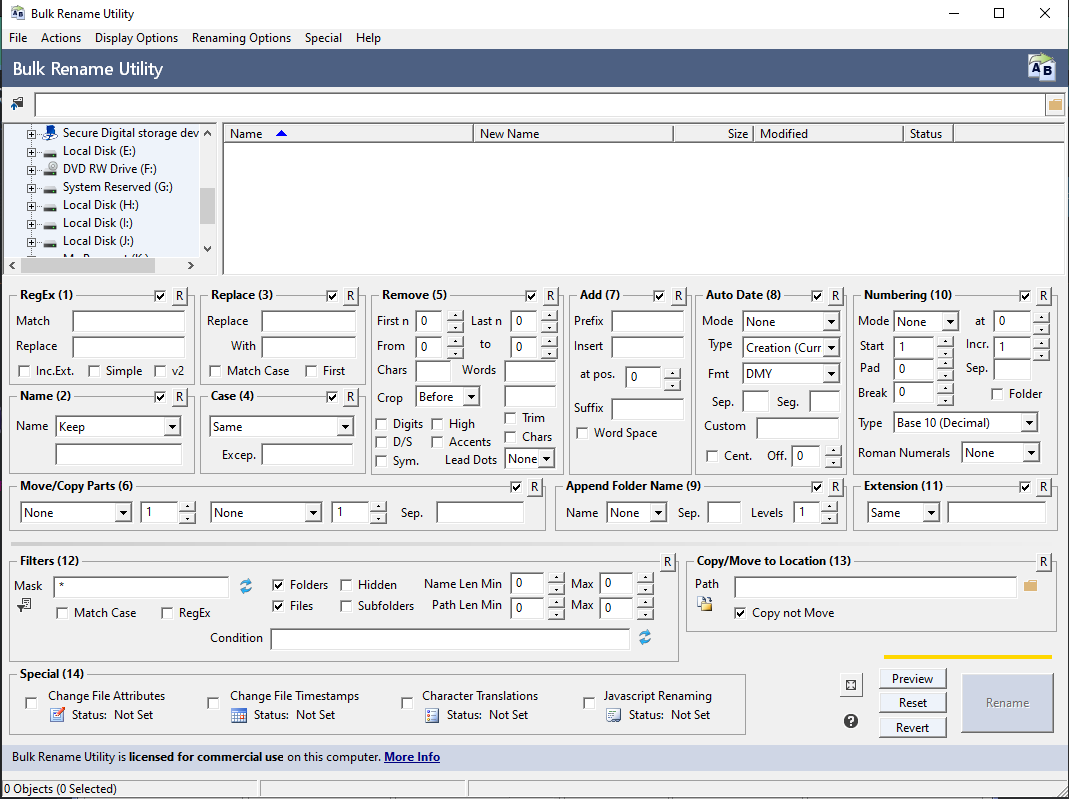

- WINDOWS BULK FILE RENAME UTILITY HOW TO
- WINDOWS BULK FILE RENAME UTILITY FULL
- WINDOWS BULK FILE RENAME UTILITY WINDOWS
PowerShell offers even more flexibility for renaming files in a command-line environment. If you’re interested, the folks over at the Lagmonster forums have an excellent writeup on the subject.
WINDOWS BULK FILE RENAME UTILITY HOW TO
RELATED: How to Write a Batch Script on WindowsĪnd this only begins to address the kinds of command line wizardy you can get into if you want to build more complicated commands-or even batch scripts-by weaving other commands and conditionals into things. html extension to use the same file name and same first three letters only of the file extension, which ends up cutting the “l” off of all the extensions in the folder.
WINDOWS BULK FILE RENAME UTILITY WINDOWS
This tells Windows to rename all files with the. You could use the following command to make the change: ren *.html *.? You could use the following command along with the * wildcard (which basically tells Windows that text of any length should be considered a match): ren *.txt *.htmlĪnd while we’re on the subject of wildcards, you can also do some interesting things with the ? wildcard, which is used to stand in for any single character. Say, for example, you had a selection of. Since the ren command can address extensions, you can also use it to change the extensions of multiple files at once. So, for example, to rename a file from “wordfile (1).docx” to “my word file (01).docx” you would use the following command: ren "wordfile (1).docx" "my word file (01).docx" If they don’t, you won’t need the quotes. The quotes are important if your file names contain any spaces. To rename a single file, you can use the following command syntax: ren " current_filename.ext" "new_filename.ext"

From the “File” menu, point to “Open command prompt,” and then select “Open command prompt.” The quickest way to open a Command Prompt window at your desired location is to first open the folder in File Explorer.
WINDOWS BULK FILE RENAME UTILITY FULL
The command accepts wildcard characters like * and ? for matching multiple files, which can be helpful if you only want to rename a certain selection of files in a folder full of many. If you need more power than that, you can use the rename or ren command in a Command Prompt window to one or more files. Rename Multiple Files from the Command Prompt All the selected files are renamed using the name you just typed, and are appended with a number in parentheses to differentiate them. Type a new name for the file and then hit Enter or click somewhere else in the window. You’ll see that all the files remain selected, but the first one in the group gets its name highlighted so you can type a new name. When you’ve got the files selected, use one of the rename commands-the button on the Home menu, the command on the context menu, or just press F2. Start by selecting a bunch of files-you can hold down the Ctrl key to select multiple files at once, or Shift to select a range of files. If you’re renaming a bunch of files in the same folder and those files don’t need completely different names from one another, Windows provides an easier way to rename those files in batch. Keep hitting Tab and typing names this way and you can easily rename all the files in a folder if you’re so inclined. Here’s where things get interesting: you can also hit the Tab key to automatically select the next file name in the folder so that you can immediately begin typing a new name for it. When you’re done typing the file name, you can press Enter (or just click somewhere else) to save the new name.

Once you’ve got the file name selected-and you’ll notice only the file name itself is selected, not the extension-you can type a new file name.


 0 kommentar(er)
0 kommentar(er)
